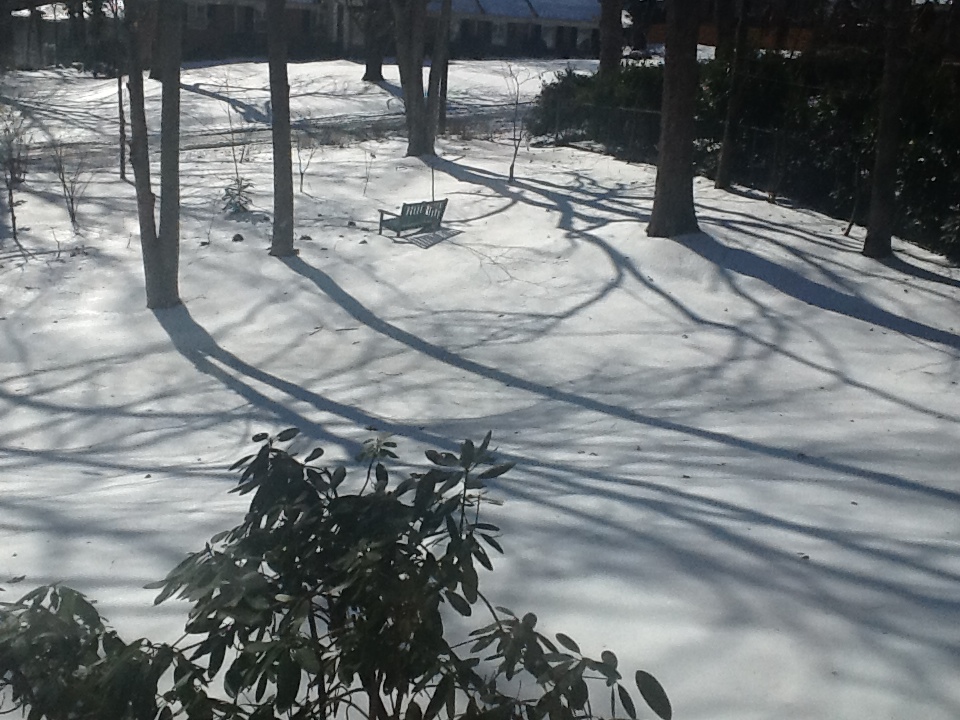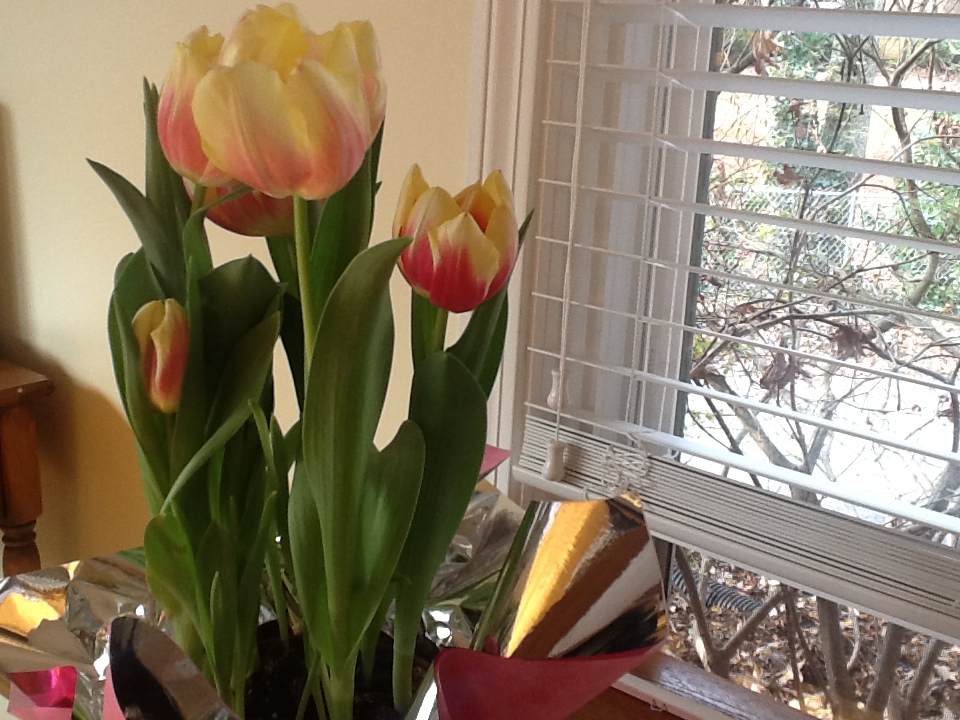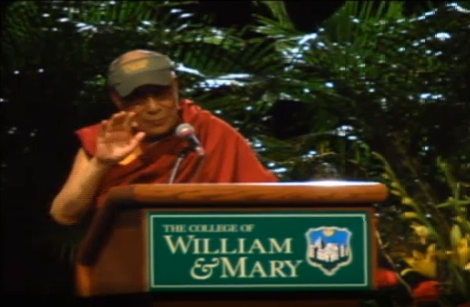Blog
The Art of Meditation by Matthieu Ricard, Part 1
One has to start somewhere as a beginner, and I’ve decided to start here. I ordered Matthieu Ricard’s book, Why Meditate?, but while waiting for its arrival I found this video by him: The Art of Meditation. I realized if I’m going to try and explore connections between writing and meditating, I need to learn quite a bit more about meditation. The 29 minute video is geared toward a beginner audience, like me–someone who might be considering meditation but wants to understand more about it before diving in. Why Matthieu Ricard? His new book, Why Meditate?, showed up on a search, and everything I’ve learned about him since has given me confidence in him as a teacher. He strikes me as one of those experts who’s able to translate and explain his ideas to a beginner–but without condescension. He’s a former biologist, French, who became a Buddhist monk at the age of 30, and has, in recent years, worked with the Mind and Life Institute, a collaboration between scientists and Buddhist scholars. TED, where he’s given a talk on the habits of happiness, describes his attitude toward happiness in this way: “Achieving happiness, he has come to believe, requires the same kind of effort and mind training that any other serious pursuit involves.” I’m attracted to this notion of a mental state requiring training. I’ve always known that writing required training, and, more and more, I’ve come to think the same about healing. These are processes that require effort—they don’t just happen. Robert Chalmer, writing in The Independent in 2007, describes Ricard this way: Matthieu Ricard, French translator and right-hand man for the Dalai Lama, has been the subject of intensive clinical tests at the University of Wisconsin, as a result of which he is frequently described as the happiest man in the world. It’s a somewhat flattering title, he says, given the tiny percentage of the global population who have had their brain patterns monitored by the same state-of-the-art technology, which involves attaching 256 sensors to the skull, and three hours’ continuous MRI scanning. The fact remains that, out of hundreds of volunteers whose scores ranged from +0.3 (what you might call the Morrissey zone) to -0.3 (beatific) the Frenchman scored -0.45. He shows me the chart of volunteers’ results, on his laptop. To find Ricard, you have to keep scrolling left, away from the main curve, until you eventually find him – a remote dot at the beginning of the x-axis. I don’t know much about these happiness scans—or what his scan might have looked like, say, when he was twenty-five, before he became a monk—but certainly this is intriguing. Chalmers also writes this, one of the reasons I rather like and have a tendency to trust the article: In the foreword to Happiness, the psychologist Dr Daniel Goleman describes how a three-hour wait at an airport “sped by in minutes, due to the sheer pleasure of Matthieu’s orbit” – a phrase which had made me faintly nauseous when I first read it. Now, it seems to make perfect sense. Ricard exudes a sense of tranquillity, kindness and – surprisingly enough – humour. Skeptical journalist won over by tranquility, kindness, and humor. I like that Matthieu Ricard opens the video with a very basic question. This...
read moreWriting and Meditation: Writing Down the Bones: First Questions
When I think about writing and meditation, the very first moment that comes to mind—the moment when I first thought of these two concepts as linked—is a moment in my late twenties, coming across Natalie Goldberg’s book, Writing Down the Bones, and finding this: In 1974 I began to do sitting meditation. From 1978 to 1984 I studied Zen formally with Dainin Katagiri Roshi (Roshi is a title for a Zen master) at the Minnesota Zen Center in Minneapolis. Whenever I went to see him and asked him a question about Buddhism, I had trouble understanding the answer until he said, ‘You know, like in writing when you . . .’ When he referred to writing, I understood. About three years ago, he said to me, ‘Why do you come to sit meditation? Why don’t you make writing your practice? If you go deep enough in writing, it will take you everyplace?’ This, for me, was like coming across fresh water—or a compass, a map, the right food at the right time. Yes, maybe that’s how it can be. A part of me had begun to suspect this—a faint voice telling me that writing could take me where I needed to go. But reading that passage—that sense of permission—it strengthened that voice in me, nurtured it, encouraged it. Now it’s been more than twenty-five years. I can say with full confidence that my life is far richer and better because I have written through so much of it. But lately I’ve been thinking that I want to be even more intentional in the ways that I use writing as a practice. To look at it more closely. Is writing, potentially, a form of meditation itself? (That’s what Katagiri Roshi seemed to be suggesting above.) Can writing be a bridge to meditation? Or a scaffold? A kind of way station? For those, like me, who find meditation hard? Or, perhaps, can the two work together well–say, a person going back and forth from one to the other? How might writing and meditation be fruitfully connected? And how might all the information that has begun to accumulate about meditation, including meditation and neuroscience, inform that connection? These are questions I’m starting with. ______________________________________________________________________________ See also Writing Down the Bones Photo is mine. A way station?...
read moreWriting and Meditation
I’m one of those people who’s been interested in meditation for a long time. But I’ve been mostly interested from a distance–because I also find it really, really hard. I find it hard to hold a thought—or my breath—in my mind, to concentrate on that thought, or to try and work with it. I’m one of those people who finds it easier to focus on a thought—and hold it—work with it—if my fingers are moving on a keyboard, or across a page. I suspect this has everything to do with practice. If I were to graph the hours I’ve logged writing in my life—starting with the alphabet—and compare it to the minutes I’ve logged meditating, the meditation minutes would be powerfully dwarfed—they would literally disappear. I’ve been interested for a while now in how writing can become a kind of meditation—perhaps a bridge to meditation—or a boat—for those of us who have trouble diving into the deep pool of meditation. So . . . writing and meditation is one of the things I plan to write about and explore over the next year. I’ll be reading about meditation. Reading about writing and meditation. Writing about all of this—and seeing where it takes me. New pieces will be posted under Writing and Meditation. I would love to hear about your thoughts on the subject–or good resources you’ve come across. _____________________________________________________________ Photo: Rowing boats on the shore of Palokkajärvi in Jyväskylä, Finland by Magnus Franklin, from Wikimedia Commons Email is the best way to comment or contact. My new email address is diane.s.morrow at...
read moreOne Year of Writing and Healing, the Book
What can I say? The book is a tortoise. One Year of Writing and Healing, a deep revision and rewriting of my other site, is not moving quickly—but it is moving—a close-to-final draft finished. I’ll post updates here periodically. Meanwhile, I have a table of contents: Months One & Two: Creating a Healing Place Month Three: Healing as Quest? Month Four: Drawing a Map Months Five & Six: Developing the Habit of Writing Month Seven: Listening for the Voice of the Body Month Eight: Making a Place for Grief Months Nine & Ten: Figuring Out the Good Part Month Eleven: Gathering Resources for the Long Haul Month Twelve: Creating a Guest House And you are welcome to visit One Year of Writing and Healing, the website, here. (I’ve taken down the old chapters I had previously posted while I work away at them.) The photo is of an Aldabra giant tortoise. Very giant. The male weighs up to 550 pounds. Most of them live on islands in the Indian Ocean. They are described as “characteristically slow and cautious,” but “capable of appreciable speed.” I’m hoping this metaphor will bode well for my book—and that it might soon discover its capacity for appreciable speed. ______________________________________________________________________________________ Photo from Wikipedia, where you can also learn more about the Aldabra giant...
read moreReturning to The Guest House
So I’ve been away from writing at this site for some 16 months, and I want to start again. But it’s clear that if I’m going to find my way back to writing here, then some cleaning and reorganization of this site is going to be required. It’s a bit like I’ve decided to open the door and step inside after a long absence and I’m looking around and I can see all the work that needs to be done—the cleaning and sweeping and rearranging. (I’ve never had a summer home but I’ve seen them in movies—everything covered in white sheets and waiting for the season to start up again.) I’m pulling back the white sheets. I’m also aware that, like any project, this re-opening and renovation is going to be a step-by-step process: first one step and then the next and the next. I’m extremely happy to have left the Dalai Lama at the top of the page in my absence—a good teacher in residence—and I want to still give him a good place. So, the first step—I’m starting a new category here for teachers. The second step: an excerpt from Rumi’s poem, “The Guest House,” as a kind of reminder and anchor and metaphor for the work: This being human is a guest house. Every morning a new arrival. A joy, a depression, a meanness, some momentary awareness comes as an unexpected visitor. Welcome and entertain them all! Even if they are a crowd of sorrows, who violently sweep your house empty of its furniture, still, treat each guest honorably. He may be clearing you out for some new delight. This is the metaphor I want to hold at the center of this work as I return and start writing again: this notion of treating each guest honorably—the Dalai Lama and chaos and joy and sorrow and whatever else might arrive—all of it—all of the voices—and this notion that writing to navigate all the arrivals, including the difficult and challenging ones, can work as a broom—can catalyze another layer of healing work—clearing us out for some new delight. My own delight this week: two and a half days out of school for snow—with time at home in the quiet to write and to think about writing here again. And pink and yellow tulips in the window. Wishing for you many, many good things with your own writing and sweeping. And many delights in the new year. _______________________ The full poem, “The Guest House,” by Jelaluddin Rumi, Translation by Coleman Barks, can be found at...
read moreThe Dalai Lama in Williamsburg
I had the opportunity last week to see the Dalai Lama speak in Williamsburg. He’s currently making a tour of small colleges and he was appearing at William and Mary, where my daughter is a student. It made for a delightful visit. Tickets for the event had sold out within 15 minutes. More than eight thousand people attended. The line into the arena began two and a half hours before the event—and these were all people with tickets. So interesting. The student who introduced him said we would likely remember this day for the rest of our lives. I loved that he marked the gravity of the moment. The student handed the Dalai Lama a green William and Mary visor, which the Dalai Lama promptly placed on his head to loud applause. He then placed a white scarf around the student’s neck and proceeded to wear the visor for the remainder of his talk. It was a lovely beginning—and a wonderful way to undercut the gravity with a sense of lightness. The Dalai Lama greeted us as brothers and sisters. He made a point that people make too much of secondary differences like status. He then began by emphasizing that we are entering a new reality which is going to require a new kind of thinking. His main emphasis was, not surprisingly, on the need for compassion. But there was a teaching here that I hadn’t heard in quite this way before. He made a sharp distinction between animal compassion and human compassion. All animals have compassion toward their young and those whom they have a positive connection with. Human compassion gives us the intelligence to extend our compassion—beyond our families and our groups. He repeated over and over that it’s a mistake to think that this compassion is primarily for the benefit of others. This compassion is first and primarily of benefit to ourselves. How our compassion is received is beyond our control—and not our business. A person might respond negatively because of their mind but we shouldn’t be afraid of that or pretend because of that. Compassion helps us. It benefits us. It changes us. He told a story about Cuban refugees who he met who were praying for Castro. They were praying that he would die and go to heaven. This story made the Dalai Lama laugh quite a bit. He seemed to be approving of their skillfulness in this prayer—that they had managed to extend compassion under difficult circumstances. He laughed often during his presentation, as if so much of what he said tickled him. He made a sharp distinction between actions and actors. We can believe, he said, that an action is wrong and still care and feel compassion toward the actor. He told about meeting George Bush. (I believe he meant the son, George W.) He talked about feeling such a good sense of friendliness. He called him his friend, and went on to say he approved of his motivation, wanting to spread democracy. “But not his method—force.” He went on to say that violence has unintended consequences. He was very clear that one could disapprove of a person’s action and still call that person friend. He was gracious throughout. He received at least 3 standing ovations. He thanked us for being attentive....
read more





